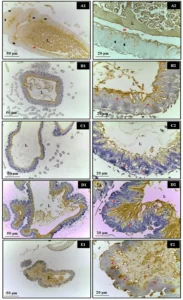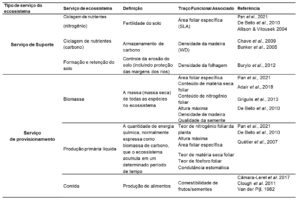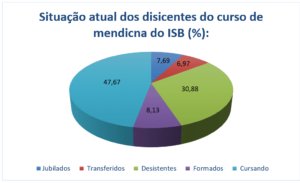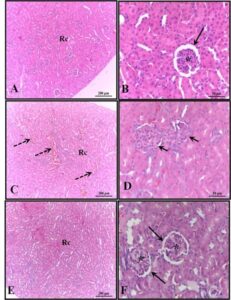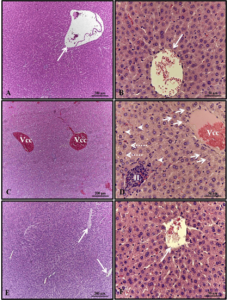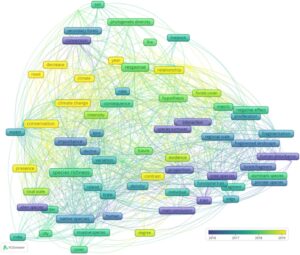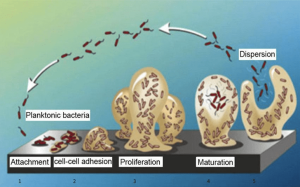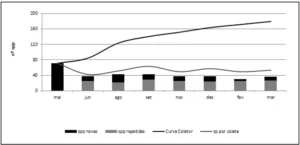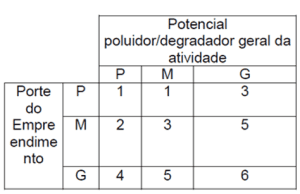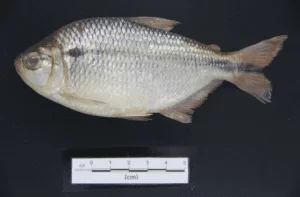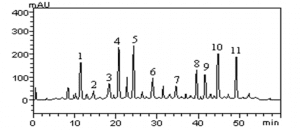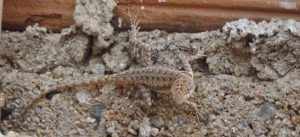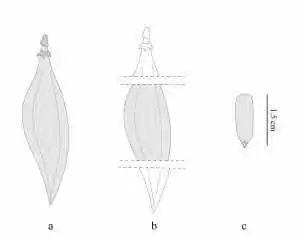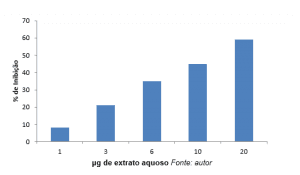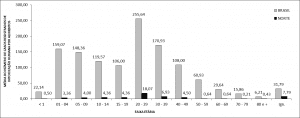ARTIGO ORIGINAL
FRANCO, Fernando Wendel [1], MALONN, Maíra Casali [2], BOLIGON, Aline Augusti [3], SOARES, Félix Alexandre Antunes [4], PUNTEL, Gustavo Orione [5]
FRANCO, Fernando Wendel. Et al. Artemisia absinthium ethanolic extract HPLC phytochemical analysis. Revista Científica Multidisciplinar Núcleo do Conhecimento. Year 07, Ed. 11, Vol. 14, pp. 05-14. November 2022. ISSN:2448-0959, Access link in: https://www.nucleodoconhecimento.com.br/biology/artemisia-absinthium-ethanolic
ABSTRACT
The medicinal plant Artemisia Absinthium (AA) is widely utilized around the world. Its ethanolic extract is frequently taken as a drink for a variety of health issues, including gastrointestinal difficulties. The goal of this study was to look into the phytochemical profile of AA ethanolic extract (AAEE), which is used as a therapeutic plant by the general public. Dry leaves were used to make AAEE, which was then lyophilized. HPLC and phytochemical tests were used for in vitro analysis. Our findings demonstrate that AAEE contains a variety of polyphenols and flavonoids, the most important of which are ferulic acid, caffeic acid, and gallic acid (quercetin and kaempferol). These chemicals have been linked to biological activities and may be responsible for the extract’s therapeutic benefits.
Keywords: Polyphenols, Flavonoids, Fbsinthium, Losna.
1. INTRODUCTION
There has been a rise in medicinal plant research for diverse therapeutic uses for many years (JARIĆ et al., 2007). Plants are thought to be used as the initial healing resource by about 80% of the world’s population (ESTOMBA; LADIO; LOZADA, 2006). Artemisia Absinthium (AA) stands out in this context because it is a medicinal plant with multiple biological activities that has been used by the population for many years (CHIASSON et al., 2001).
AA is an herbaceous plant with natural fibrous roots that is used as an herbal cure in Central Europe, Southern Siberia, North America, and Asia (ABAD et al., 2012). The plant was originally given the name Absinthium. It’s known as losna in Brazil, for example. It is thought to be derived from the Greek word “absinthium,” which meaning “unpalatable,” a reference to its bitter flavor (BHAT et al., 2019).
Terpenoids, flavonoids, coumarins, polyphenols, sterols, and acetylenes are among the chemical components found in the phytochemical profile of AA, according to research. Due to the inclusion of multiple active components that work in different ways, AA plant extracts have a wide range of bioactivity.
Extracts from AA have traditionally been used and have a variety of medicinal properties, including hepatoprotective (WEI et al., 2019), antidepressant (MAHMOUDI et al., 2009), diuretic (SINGH; VERMA; SINGH, 2012), anti-inflammatory (AHMAD; KHAN; RASHEED, 1992), antifungal (SINGH; VERMA; SINGH, 2012), antimicrobial (SINGH; VERMA; SINGH, 2012), antifungal (EREL et al., 2012).
Ethanolic AA extract is consumed in drinks like Absinthe and harsh alcoholic cocktails in Brazil and many other places across the world. This work is significant because it reproduces an extraction process that is comparable to the empirical method employed in folk medicine. Making it feasible to determine the phytochemical profile of tea in its most often consumed form.
2. MATERIAL AND METHODS
2.1 CHEMICAL REAGENTS
Methanol, ethanol, acetic acid, gallic acid, chlorogenic acid, ferulic acid, and caffeic acid were acquired from Merck for high-performance liquid chromatography (HPLC-DAD) analysis (Darmstadt, Germany).
2.2 ARTEMISIA ABSINTHIUM ETHANOLIC EXTRACT PREPARATION (AAEE)
In April of 2014, AA leaves were obtained from the herbarium of the Federal University of Santa Maria -RS in Brazil. The samples’ botanical identification was confirmed, and a voucher specimen (number ICN 9511; Artemisia absinthium) was deposited at the Federal University of Santa Maria’s ICN Herbarium (UFSM).
The dried leaves of the plant were used to make AAEE. After separating the leaves from the stems, they were dried in the shade. They were then weighed and placed in a Soxhlet device at 30 ° C for an ethanolic extraction.
After that, the solutions were filtered and put into volumetric flasks. They were then dried in a silica desiccator after being placed in a rotary evaporator at 30° C to remove the solvent. The extract was then lyophilized and the resulting powder was kept at -80 ° C for further use.
2.3 QUANTIFICATION OF AAEE
2.3.1 HPLC ANALYSIS
The AAEE was tested using a Shimadzu Prominence Auto Sampler (SIL-20A) HPLC system (Shimadzu, Kyoto, Japan) with Shimadzu LC-20AT reciprocating pumps, a DGU 20A5 degasser with a CBM 20A integrator, SPD-M20A diode array detector, and LC solution 1.22 SP1 software.
Reverse phase chromatographic analyses were carried out under gradient conditions using a C18 column (4.6 mm x 250 mm) packed with 5 μm diameter particles; the mobile phase was water containing 2% acetic acid (A) and methanol (B), and the composition gradient was: 5% (B) for 2min; 25% (B) until 10 min; 40, 50, 60, 70 and 80% (B) every 10 min; following the method described by Boligon et al. (2012). (FRANCO et al., 2021).
Before use, the AAEE mobile phase was filtered through a 0.45 m Millipore membrane filter and then degassed with an ultrasonic bath. The extracts were analyzed at a concentration of 20 mg/mL. The injection volume was 40 l and the flow rate was 0.7 ml/min. Before use, the sample and mobile phase were filtered through a 0.45 m Millipore membrane filter and degassed in an ultrasonic bath. Stock solutions of standard references were prepared in the HPLC mobile phase at concentrations of 0.030 – 0.250 mg/ml for catechin, epicatechin, quercetin, quercitrin, isoquercitrin, kaempferol, and rutin, and 0.045 – 0.500 mg/ml for gallic, ferulic, chlorogenic, and caffeic acids, and 0.045 – 0.500 mg/ml for all.
The peaks were measured at 257 nm for gallic acid, 280 nm for catechin and epicatechin, 325 nm for chlorogenic, ferulic, and caffeic acids, and 365 nm for quercetin, quercitrin, isoquercitrin, rutin, and kaempferol using the external standard method. By comparing the retention duration of the chromatography peaks to those of reference standards and using DAD spectra, the chromatography peaks were determined (200 to 600 nm). All chromatographic procedures were performed in triplicate at room temperature.
2.3.2 DETERMINATION OF TOTAL PHENOLS
Total phenols were determined colorimetrically, with some adjustments, as described by (Folin-Ciocalteu, 1973). In a dark bottle, sample (1g) was mixed with 10 mL 80 percent methanol and shaken for 2 hours. Folin-Ciocalteu reagent and sodium carbonate were used to create the color. A volume of 0.250 mL was mixed with 0.250 mL Folin-Ciocalteau reagent and 0.50 mL of 10% sodium carbonate (Na2CO3), then distilled water was added to bring the total volume to 5 mL. The absorbance of the reaction mixture was measured at 725 nm against a blank after 30 minutes of incubation in the dark at room temperature. The standard compound was gallic acid, and the results were expressed in mg/mL.
2.3.3 DETERMINATION OF TOTAL FLAVONOIDS
The total flavonoids in the sample (1g) were measured by mixing it with 10 mL 80 percent methanol and shaking it for 2 hours. In 4 mL of H2O, total flavonoids extract (0.4 mL) was added. After that, 0.3 mL of 5% NaNO2 was added. 0.3 mL of 10% AlCl3 was added after 5 minutes. 2 mL 1 M NaOH was added after 6 minutes, and the total volume was made up to 10 mL with distilled water. The color was compared to a blank reagent at 510 nm. The standard chemical was catechin, and the results were stated in mg/mL.
3. RESULTS
3.1 QUANTIFICATION OF AAEE CONSTITUENTS
3.1.1 HPLC-DAD
The HPLC profile of AAEE is shown in Figure 1 and Table 1 reveled the following main compounds: gallic acid (retention time- Rt 11.39 min, peak 1), catechin (Rt = 14.97 min, peak 2), chlorogenic acid (Rt = 18.73 min, peak 3), caffeic acid (Rt = 21.08 min, peak 4), ferulic acid (Rt = 24.11 min, peak 5); epicatechin (Rt = 29.37 min, peak 6), rutin (Rt = 35.16 min, peak 7), quercitrin (Rt = 39.85 min, peak 8), isoquercitrin (Rt = 42.07 min, peak 9), quercetin (Rt = 44.81 min, peak 10) and kaempferol (Rt = 49.73 min, peak 11).
Figure 1 – Artemisia absinthium ethanolic extract phenolics and flavonoids profile using high-performance liquid chromatography (AAEE). Gallic acid (peak 1), catechin (peak 2), chlorogenic acid (peak 3), caffeic acid (peak 4), ferulic acid (peak 5), epicatechin (peak 6), rutin (peak 7), quercetin (peak 9) and kaempferol (peak 10) (peak 11)
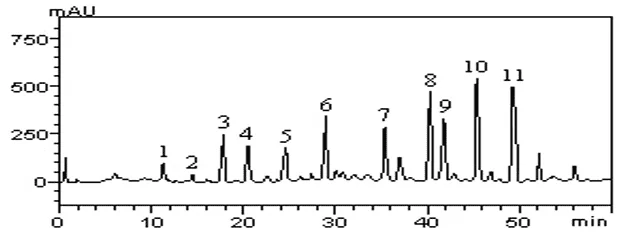
Table 1 – HPLC phenolics and flavonoids composition of Artemisia absinthium ethanolic extract

3.1.2 TOTAL PHENOLS AND FLAVONOIDS CONTENT
Ferulic acid was the most abundant concentrated polyphenol discovered, followed by caffeic acid and gallic acid. In terms of flavonoid content, quercetin was the most abundant, followed by kaempferol. Table 2 lists these and additional phenolic and flavonoid chemicals, as well as their concentrations.
Table 2 – Phytochemical analysis of total phenols and flavonoids content Artemisia absinthium

4. DISCUSSION
The plant Artemisia absinthium is high in polyphenols and flavonoids (MSAADA et al., 2015). Many of the biological activities of AA, such as caffeic acid, ferulic acid, gallic acid, quercetin, and kaempferol, are described in the literature about these compounds found in ethanolic extracts. Caffeic acid and its derivatives show antibacterial efficacy against Escherichia coli and Staphylococcus aureus, according to (ARAÚJO et al., 2019). Ferulic acid shows antibacterial efficacy against Listeria monocytogenes, according to Pernin et al. (2019). Gallic acid also exhibits antibacterial effects against Escherichia coli, Pseudomonas aeruginosa, Staphylococcus aureus, and Listeria monocytogenes, according to Borges et al. (2013). In addition, Pernin et al. (2019) found that ferulic acid exhibits antibacterial properties in the presence of Listeria monocytogenes in another investigation.
A. absinthium also contains flavonoids such as quercetin, rutin, and other flavonoids like such as isoquercitrin, quercitin-3-O-d-glucoside (Olennikov et al., 2018), quercitin-3-Orhamnoglucoside (PERNIN et al., 2019), isorhamnetin-3-O-rhamnoglucoside, isorhamnetin-3-glucoside, and phenolic acids such as chlorogenic, syringic, coumaric, salicylic, and vanillic that are probably involved in the mechanism of prevention of oxidative damages in biological systems (KORDALI et al. 2005b). (FRANCO et al., 2021).
A. absinthium has been proven in several studies to have powerful antioxidant, free radical scavenging, and anti-inflammatory properties. Phytochemicals such as total phenolic compounds and total flavonoids are abundant in AA, implying that these substances contribute to antioxidative activity. Antioxidant capabilities are thought to exist in phenolic compounds such as flavonols, cinnamic acids, coumarins, and caffeic acids or chlorogenic acids, which may play a role in protecting cells and organs against oxidative degeneration (WISEMAN; MULDER; RIETVELD, 2001).
The therapeutic effects attributed to the extract could be due to any of the biological features listed in the individual or combination components as they appear in the ethanolic extract. As a result, the phytochemical analysis of AA done in this study helps to elucidate or explain one of the possible mechanisms of action that support the medicinal use of AA in traditional medicine.
5. CONCLUSION
We may conclude from this research that AAEE has a lot of polyphenols and flavonoids. We can see that these chemicals exhibit a wide range of biological activities, including antifungal, antimicrobial, and antioxidant properties. The cumulative or synergistic impact of the numerous components found in the plant may explain the various biological qualities of AA extract, which are ingested by the population for medical purposes. These components in the ethanolic extract have already been shown to have biological activity in the scientific literature. However, more research is needed to fully understand the characteristics of AAEE.
REFERENCES
ABAD, M. J. et al. The Artemisia L. genus: a review of bioactive essential oils. Molecules, v. 17, n. 3, p. 2542-2566, 2012. Available in: https://doi.org/10.3390/molecules1703254. Access in: 11 Nov. 2022.
AHMAD, F.; KHAN, R. A.; RASHEED, S. Study of analgesic and anti-inflammatory activity from plant extracts of Lactuca scariola and Artemisia absinthium. Journal of Islamic Academy of Sciences, v. 5, n. 2, p. 111-114, 1992. Available in: https://medicaljournal-ias.org/jvi.aspx?pdir=ias&plng=eng&un=IAS-39306. Access in: 11 Nov. 2022.
ARAÚJO, M. O. et al. Synthesis, antibacterial evaluation, and QSAR of caffeic acid derivatives. Journal of Chemistry, v. 2019, 2019. Available in: https://doi.org/10.1155/2019/3408315. Access in: 11 Nov. 2022.
BHAT, R. R. et al. Chemical composition and biological uses of Artemisia absinthium (wormwood). Plant and Human Health, v. 3, p. 37-63, 2019. Available in: https://doi.org/10.1007/978-3-030-04408-4_3. Access in: 11 Nov. 2022.
BORGES, A. et al. Antibacterial activity and mode of action of ferulic and gallic acids against pathogenic bacteria. Microbial Drug Resistance, v. 19, p. 256–265, 2013. Available in: https://doi.org/10.1089/mdr.2012.0244. Access in: 11 Nov. 2022.
CHIASSON, H. et al. Acaricidal properties of Artemisia absinthium and Tanacetum vulgare (Asteraceae) essential oils obtained by three methods of extraction. Journal of Economic Entomology, v. 94, n. 1, p. 167-171, 2001. Available in: https://doi.org/10.1603/0022-0493-94.1.167. Access in: 11 Nov. 2022.
EREL, Ş. B. et al. Antimicrobial and antioxidant properties of Artemisia L. species from western Anatolia. Turkish Journal of Biology, v. 36, n.1, p. 75-84, 2012. Available in: doi:10.3906/biy-0912-27. Access in: 11 Nov. 2022.
ESTOMBA, D.; LADIO, A.; LOZADA, M. Medicinal wild plant knowledge and gathering patterns in a Mapuche community from North-western Patagonia. Journal of Ethnopharmacology, v. 103, n. 1, p. 109-119, 2006. Available in: https://doi.org/10.1016/j.jep.2005.07.015. Access in: 11 Nov. 2022.
FRANCO, F. W. et al. Phytochemical analysis of Artemisia absinthium aqueous extract. Revista Científica Multidisciplinar Núcleo do Conhecimento, ano 6, v. 12, n. 2, p. 155-164, 2021. Available in: DOI: 10.32749/nucleodoconhecimento.com.br/biology/phytochemical-analysis. Access in: 11 Nov. 2022.
JARIĆ, S. et al. An ethnobotanical study on the usage of wild medicinal herbs from Kopaonik Mountain (Central Serbia). Journal of Ethnopharmacology, v. 111, n. 1, p. 160-175, 2007. Available in: https://doi.org/10.1016/j.jep.2006.11.007. Access in: 11 Nov. 2022.
MAHMOUDI, M. et al. Antidepressant and antioxidant activities of Artemisia absinthium L. at flowering stage. African Journal of Biotechnology, v. 8, n. 24, 2009. Available in: 10.4314/ajb.v8i24.68818. Access in: 11 Nov. 2022.
MSAADA, K. et al. Chemical composition and antioxidant and antimicrobial activities of Wormwood ( Artemisia absinthium L.) Essential oils and phenolics. Journal of Chemistry. v. 2015, p. 1–12, 2015. Available in: https://doi.org/10.1155/2015/804658. Access in: 11 Nov. 2022.
PERNIN, A. et al. Ferulic acid and eugenol have different abilities to maintain their inhibitory activity against Listeria monocytogenes in emulsified systems. Frontiers in Microbiology v. 10, p. 1–10, 2019. Available in: https://doi.org/10.3389/fmicb.2019.00137. Access in: 11 Nov. 2022.
SINGH, R.; VERMA, P. K.; SINGH, G. Total phenolic, flavonoids and tannin contents in different extracts of Artemisia absinthium. Journal of Complementary Medicine Research, v. 1, n. 2, p. 101-104, 2012. Available in: https://doi.org/10.5455/jice.20120525014326. Access in: 11 Nov. 2022.
WEI, X. et al. The Extracts of Artemisia absinthium L. suppress the growth of hepatocellular carcinoma cells through induction of apoptosis via endoplasmic reticulum stress and mitochondrial-dependent pathway. Molecules, v. 24, n. 5, p. 913, 2019. Available in: https://doi.org/10.3390/molecules24050913. Access in: 11 Nov. 2022.
WISEMAN, S.; MULDER, T.; RIETVELD, A. Tea flavonoids: bioavailability in vivo and effects on cell signaling pathways in vitro. Antioxidants and Redox Signaling, v. 3, n. 6, p. 1009-1021, 2001. Available in: https://doi.org/10.1089/152308601317203549. Access in: 11 Nov. 2022.
[1] Doctorate degree. ORCID: 0000-0002-4762-5855.
[2] Master’s degree. ORCID: 0000-0002-2600-5964.
[3] Doctorate degree. ORCID: 0000-0002-6001-1313.
[4] Doctorate degree. ORCID: 0000-0002-6453-7902.
[5] Advisor. ORCID: 0000-0002-1641-9477.
Sent: April, 2022.
Approved: November, 2022.

